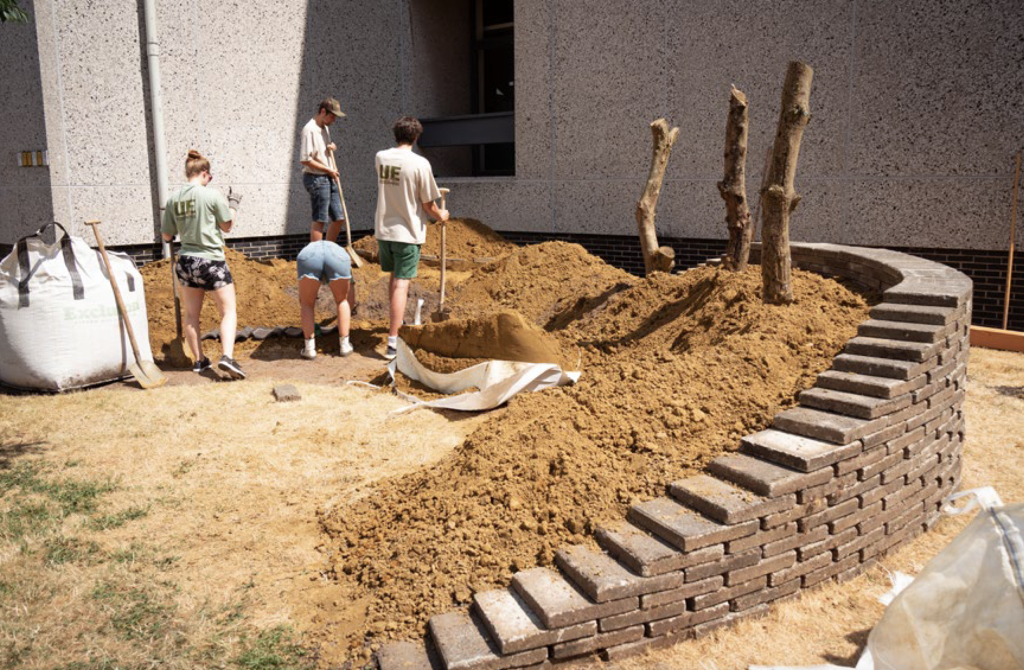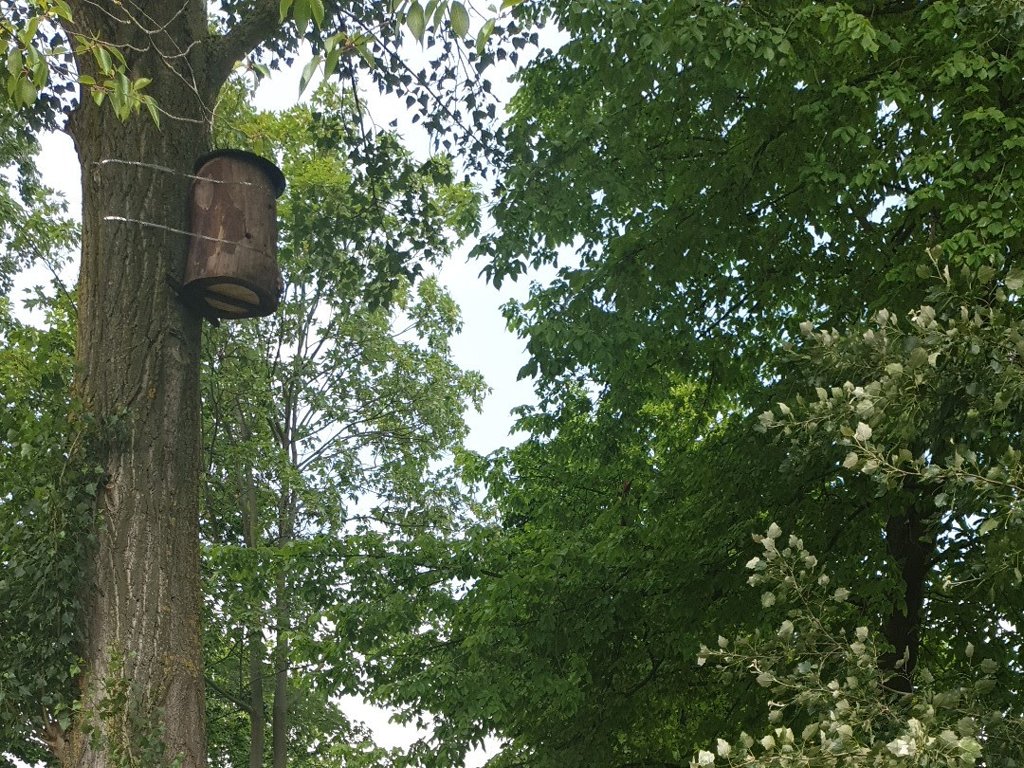We know honey bees mainly from beekeepers. But in the wild, honey bees are invaluable for biodiversity. To give wild bees more space, innovative nests have been developed.

In many countries, honey bees are kept for their honey; they are part of the agricultural system. In addition, honey bees also live in the wild. As of today, it is difficult to say how many wild honey bees are in Europe and how they are doing. This is partly because the animals are semi-domesticated. Regardless, wild honey bees are essential for nature. Like the other wild bees, they ensure the cross-pollination of many different species of flowering plants.
Besides, through their way of life, they contribute to the genetic diversity of honey bee populations, which is essential for the health and resilience of the species. This is why Natasja Roodbergen, owner of Boombijen.nl, makes special nests for honey bees from old tree trunks. Thanks to them, bees can follow their natural behavior and are subject to natural selection. A large, hollowed-out tree trunk is a perfect nest for bees. In nature, bees migrate into nests abandoned by woodpeckers, for example. As such cavities are increasingly difficult to find, Roodbergen wants to help bees on their way.
"In other European countries, nests have been made from old trees for some time, but nobody was doing it in the Netherlands. That's why I started looking into it," she says. The safest place to hang the nests is on top of the trees. The leaves offer protection from the heat in summer. And in spring, when the bees become active again, the lack of leaves provides the necessary solar heat. The critters fascinate her. "Honey bees live socially, in large colonies of sometimes thirty to forty thousand bees. They communicate about the locations of food and nesting opportunities. To keep warm in winter, they produce their fuel supply in summer, the well-known honey. They also prefer to choose a well-insulated nest; in this respect, they are like humans. They have to work together at a high level to survive, as one organism."
A biodiverse campus
Tillie is committed to a climate-adaptive and biodiverse campus in Delft. "It started about five years ago with a bit of guerrilla gardening, we took out some paving stones to plant flowers. That's how it kept growing until we were even asked to help think about the vision for the Ecocampus. We do that entirely together with the students. The greening is increasingly visible, which is nice to see."
The TU Delft campus has plenty of space for bees. For instance, there are bee totem poles, bee setts, and B&Bs for bees. All places where bees can find shelter and food. "We are working on a complete bee landscape and we will set up butterfly routes and create space for birds. Water storage, vegetation, and human welfare are also important aspects to take into account," says Tillie.
Best pollinators
Roodbergen adds: "Bees are one of the best kinds of pollinators. Without bee pollination - or other insects - large parts of flower and plant species die out. Flowers and plants are also food for other animals, so they would have a hard time, too. In short, bees are important for biodiversity." A large bee population consisting of different species of bees is essential. "Species diversity keeps bee populations and thus the ecosystem resilient."
Without bees, flowers also struggle, Tillie emphasizes with an example: "In China, apple and pear trees are pollinated by humans, they pollinate them with brushes. So less biodiversity also has far-reaching consequences for the food industry," he explains. The landscape architect sees biodiversity as a pyramid of cubes. "If you take out one cube, the rest can absorb it. But if several cubes fall out, the pyramid collapses. Of course, something will always remain, and new flowers and plants will emerge, but the quality will always be lower."
Fighting parasites
That argues for ensuring that honey bees flourish (again) in the wild. To make that happen, Delphine Panziera, a researcher at Wageningen University & Research, is researching varroa in bees. The varroa mite is a common parasite that has spread worldwide from Asia by transporting bee colonies. The parasite transmits several viruses. It is a major problem for beekeepers. "In addition, for years, it was assumed that most wild honey bees in Europe have died out because of this parasite. But it turns out that this is not so easy to say after all," Panziera says. In Wageningen, research into the natural development of varroa resistance has been carried out for decades. "We know that colonies affected by varroa often die out after two years. We are now working at three sites in the Netherlands with small populations not treated against varroa. In this way - through natural selection - we are trying to investigate whether bees can defend themselves against this parasite and how this can happen," she says of her research.
Vibrant landscape
Roodbergen concludes, "I hope there will be enough space for wild honey bees again in the future. I would like to contribute by making more tree nests and spreading them around the area, together with TU Delft and other parties. I also hope that flowers and plants will get more space in our society and economy. For instance, we have fewer monocultures in agriculture, and less poison is used. That is not only good for honey bees, but also for other animals."

